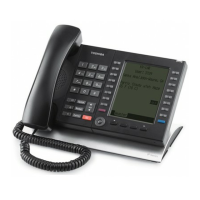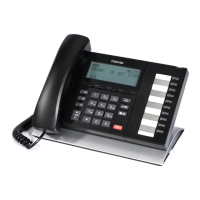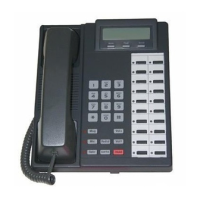
Do you have a question about the Toshiba IP5122-SD and is the answer not in the manual?
| Type | IP Phone |
|---|---|
| Number of Lines | 2 |
| Programmable Buttons | 10 |
| Power over Ethernet | Yes |
| Speakerphone | Yes |
| Headset Jack | Yes |
| Message Waiting Indicator | Yes |
| Wall Mountable | Yes |
| Supported Protocols | SIP |
| Power Supply | Optional AC Adapter |
| Headset Port | RJ-9 |
| Handset | Yes |
| Display | LCD |
| Ethernet Ports | 2 (10/100 Mbps) |
| Audio Codec Support | G.711, G.729 |
Lists trademarks associated with Toshiba and Mitel products.
Covers FCC radio frequency interference, Underwriters Laboratory listing, and general safety precautions.
Provides critical warnings regarding emergency service (911), security, and general system operation.
Defines key terms and outlines the non-exclusive license granted for software use.
Details ownership of software rights and limited warranties provided by Mitel.
Specifies limitations of liability for software use and intellectual property rights indemnification.
Covers export controls, U.S. government rights, technical support, and governing agreement terms.
Covers the installation process for IP telephones, including mounting, modules, and initial power-up.
Details the IP5000-series telephones, add-on modules, and their specifications.
Explains how to wire IP telephones, power options (PoE, AC adapter), and cable requirements.
Guides on connecting IP telephones to IPedge and VIPedge systems and the initial setup process.
Provides end-user reference for settings, resets, carbon settings, CO line, and feature interactions.
Outlines software requirements, IPedge, VIPedge licenses, and over-subscription policies.
Details how to add, edit, delete, export, import, and manage station assignments and data.
Configures station preferences like Prime DN, Station Type, Call Forwarding, COS, DRL, FRL, QPL, and Call Pickup.
Addresses bearer capability, CESID, emergency calls, remote call forwarding, call waiting, park/hold, and message waiting.
Covers IP phone login, security, SIP modes, channel numbers, and terminal authentication settings.
Describes the process of resetting IP Telephones to default mode and initial setup.
Guides on server address discovery, IP address settings, and entering Directory Numbers for registration.
Explains status displays during server registration and basic troubleshooting steps.











